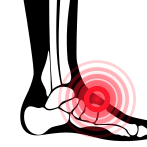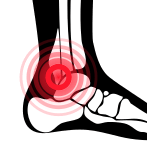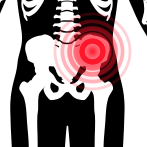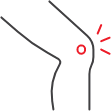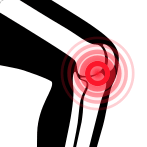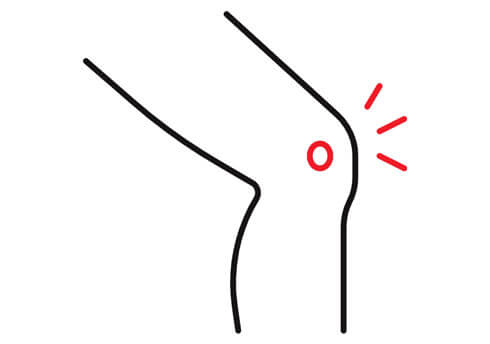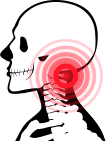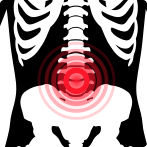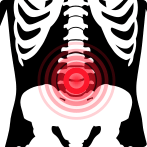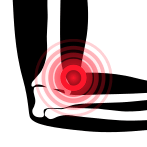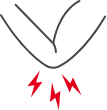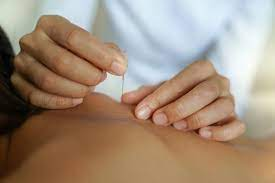Symptoms of spinal stenosis are suffered by approximately 250,000 to 500,000 residents in the United States today. This breaks down in the following manner:
- In individuals 50 years and older – five out of every 1000
- In individuals 65 and older – one out of every 1000
Eventually, roughly 95% of the population will likely suffer from degenerative conditions such as spinal stenosis.
CT scans, MRIs, x-rays, and more are used to determine whether or not an individual has spinal stenosis.
Next Level Physio offers Lumbar Spinal Stenosis Physical Therapy in NJ, you can count on us!
What Is Lumbar Spinal Stenosis?
When the spinal column loses joint fluid and narrows, this can be referred to as spinal stenosis. It is a degenerative disease. In the lumbar area of your spine (your lower back), this type of affliction is most common. That’s why it’s referred to as lumbar spinal stenosis. There is also a condition referred to as cervical stenosis which, not surprisingly, affects the neck.
Wear and tear changes in the spine commonly cause spinal stenosis. This can be related to osteoarthritis.
The good news is that positive results have been achieved through the right treatment. You simply need to contact the appropriate services for treatment – such as the professionals at Next Level Physio.
Signs and Symptoms of Lumbar Spinal Stenosis
It can be difficult to move around or walk if you experience pseudoclaudication. Eventually, driving, walking, and other tasks could become difficult due to chronic weakness, numbness, or pain in your legs.
The type of spinal stenosis present determines signs and symptoms…
Lumbar spine (lower back):
- Back pain
- When you walk or stand for long periods of time, cramping or pain in both legs or one leg. When you sit or bend forward, the pain usually eases.
- Weakness in a leg or foot
- Tingling or numbness in a leg or foot
Cervical spine (neck):
- Pain
- Problems with balance and walking
- Weakness in the leg, foot, arm, or hand
- Tingling or numbness in a leg, foot, arm, or hand
- Bladder or bowel dysfunction in very severe cases (incontinence and urinary urgency)
Treatments for Lumbar Spinal Stenosis
Typically, there are a handful of treatments used by a number of professionals when it comes to lumbar spinal stenosis. Not all professionals treat this affliction the same way, and it can depend largely on the severity and type of spinal stenosis being experienced by the individual.
The following are some methods of treatment used today (these are not necessarily treatments used by The Next Level Physio):
- Antiseizure drugs
- Antidepressants
- Pain relievers
- Injections and/or physical therapy
- Opioids
Note: Where pain relievers are concerned, this can consist of temporary discomfort being offered by acetaminophen (i.e., Tylenol), naproxen (i.e., Aleve), ibuprofen (i.e., Motrin IB, Advil), etc.
To create space for nerves or the spinal cord, doctors may recommend surgery in severe cases of spinal stenosis.
Count on Next Level Physio
If you suffer from lumbar spinal stenosis, turn to Next Level Physio. We help individuals over age 40 and their families. We specialize in assisting them to stay active and fit, and we help them do so without pain medications or surgery.
What kind of conditions do we treat? Here are just a few:
- Sports injuries
- Post-surgical rehab
- Fibromyalgia
- Knee and back pain
- Wrist and hand pain
- Ankle and foot pain
- Sciatica/back pain… and more
Depending on your chief complaint (ailment or condition), your diagnosis, and treatment options, some of the methods we use to assist patients are as follows:
- IASTM Technique
- Kinesio Taping
- Blood Flow Restriction Training
- Pediatric Physical Therapy
- Therapeutic Exercise
- Manual Therapy
- Electric Stimulation
- Cupping, and more
Click here to schedule an appointment and/or set up a free consultation.
Don't suffer another minute without doing all you can to stop pain in its tracks.
